As part of our ongoing webinar series
The Art of Arab Fashion, we talked to Egyptologist, Dr Colleen Darnell, about Magic and Jewellery in Egypt.
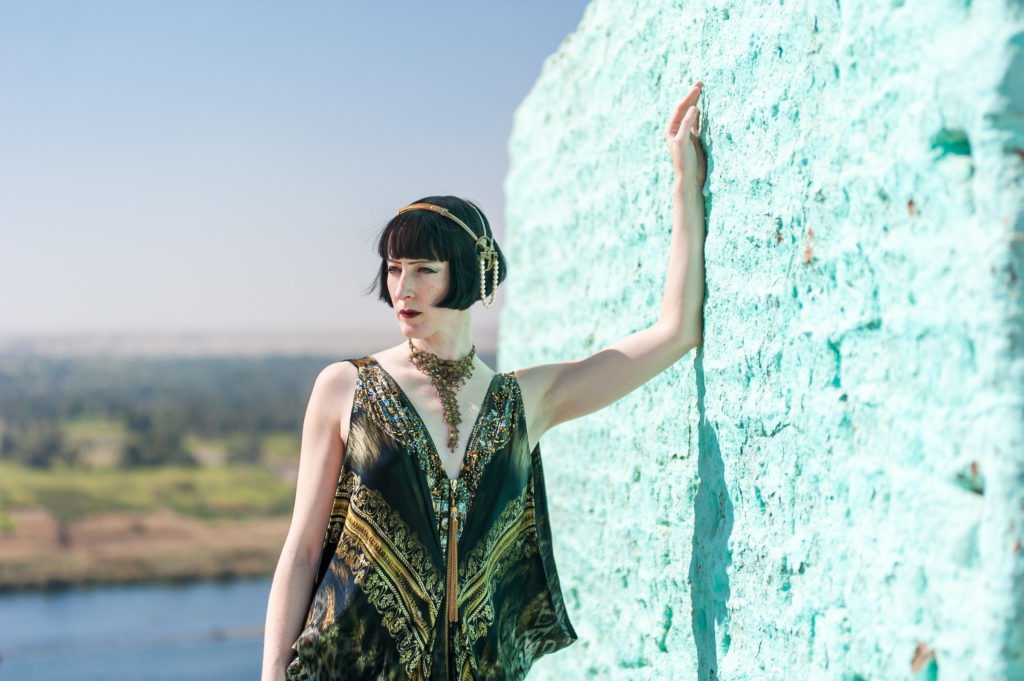 Dr Colleen Darnell
Dr Colleen DarnellDr Colleen Darnell
Dr Colleen Darnell, an American Egyptologist, teaches art history at Naugatuck Valley Community College in Connecticut. She specialises in Late Period uses of the Underworld Books, ancient Egyptian military history, the literature of New Kingdom Egypt, and Egyptian revival history.
She regularly visits Egypt where she and her fellow Egyptologist husband works on the Elkab Desert Survey Project. They also manage fascinating Instagram account where they share their love of Egypt and vintage clothing, accompanied by stories about their work and studies.
@vintage_egyptologist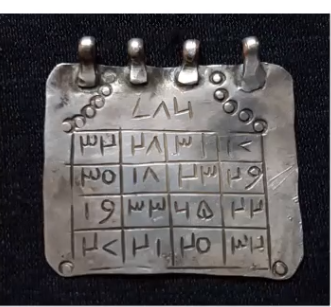 An example of a silver pendant with numbers in magic squares
An example of a silver pendant with numbers in magic squaresMagic and Jewellery
The conversation between our host, Dr Reem, and our guest, Dr Colleen, both consummate conversationalists and great storytellers, focused on jewellery and magic in Egypt from ancient times through to the Islamic period and present day.
According to Dr Colleen, some of the earliest artefacts from the Nile Valley are jewellery. With the development of more complex art and the invention of the hieroglyphic scripts by around 3000BCE, it became possible to assign definite meanings to jewellery that include its role as a form of magical protection for the wearer.
Dr Reem shared her insight on modern Egypt, the use of zar amulets and the significance of script, numbers, and symbols in both amulets and adornments.
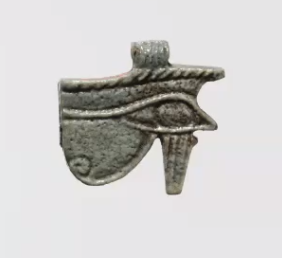 A small pendant depicting the Udjat Eye
A small pendant depicting the Udjat EyeAncient Egypt
In ancient Egypt, hieroglyphics, symbols, and rituals were all used in magic practices. According to Dr Colleen, it is important to understand the intersection between magic and religion.
“Magic was given to the people by the gods to ward off evil or bad events and we should not see magic, and the associated jewellery, as separate or counter to religious practices. Instead, magic was considered a private ritual that taps into the same realms of divinity as rituals performed in temples. It was not considered negative or black magic. Spells were also used in conjunction with practical medicine, in the same way we use holistic or complementary medicine today.” A heart scarab pendant set in gold.
A heart scarab pendant set in gold.Amulets
The Scarab or dung beetle is one of the most recognizable ancient Egyptian symbols or amulets. The name – Khepri – meaning to transform, develop, or manifest, relates to the sun rising in the East as if pushed up by a dung beetle. Scarabs were used as amulets in both everyday life and during funeral practices to give protection in the afterlife.
Scarabs were used in everyday life as a seal for documents or goods, and in many cases belonging to women who used it as a seal while managing their household economy.
Heart scarabs were placed on a mummy during funeral proceedings. Pictured here, is the back of a heart scarab inscribed with a verse from Chapter 25 of the Book of the Dead, imploring the heart of the deceased not to testify against the living in the afterlife.
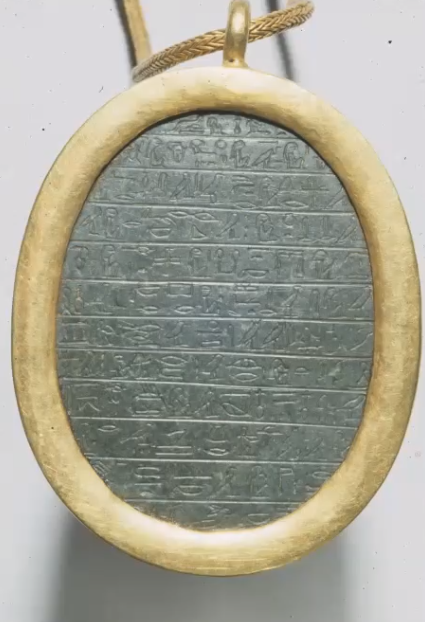 The back of the heart scarab pendant inscribed with a verse from Chapter 30 of The Book of the DeadThe Eye
The back of the heart scarab pendant inscribed with a verse from Chapter 30 of The Book of the DeadThe Eye or Udjat gets its name from the word Udja meaning healthy, whole, or sound and can represent either the sun or the moon. The Eye can either represent the eye of Horace or Ra, bringing with it the backstory of the gods and their battles which lends the eye its power. Or it can represent a female deity or a goddess.
The eye appears in many forms of jewellery and amulets and was worn by the living, as well as being buried with mummies to accompany them to the afterlife.
 This pectoral is composed around the throne name of King Senwosret II. It was found among the jewelry of Princess Sithathoryunet in a special niche of her underground tomb beside the pyramid of Senwosret II at Lahun. Credit: Metropolitan Museum NY
This pectoral is composed around the throne name of King Senwosret II. It was found among the jewelry of Princess Sithathoryunet in a special niche of her underground tomb beside the pyramid of Senwosret II at Lahun. Credit: Metropolitan Museum NYAdornment
Colleen showed two examples of jewellery found in the tomb of Princess Sithathoryunet, dating back 4000 years. These pectorals used hieroglyphics to relay messages, requests, or statements. We saw the same practice recently when Michelle Obama wore her VOTE necklace.
According to Colleen ancient Egyptian jewellery carried many layers of symbolism as pectorals could be interpreted as both hieroglyphs and symbols, while the material (stone and metals), as well as the colour of the jewellery, also represented specific meanings and values.
 Silver jewellery depicting jinns and women in Assuit fabric. Note the uneven number of bells
Silver jewellery depicting jinns and women in Assuit fabric. Note the uneven number of bellsIslamic Egypt
According to Dr Reem, the use of symbols and materials in amulets and jewellery continued into the Islamic period in Egypt. As examples, she mentioned the amulets used during Zar dance rituals, the use and meaning of magic numbers in jewellery, as well as Koranic inscriptions on silver pendants.
Symbols also carry meaning and often transcends culture, religion, and geographical boundaries. The
Seal of Solomon or the 6-pointed star now generally associated with Judaism were, and still are, prominently used in Islam as well as in the Coptic traditions, while the
Crescent, commonly associated with Islam has its origins in the Roman empire.
 A contemporary scarab pendant by Egyptian jewellery designer Azza Fahmy
A contemporary scarab pendant by Egyptian jewellery designer Azza FahmyPast, present, and future
A one-hour talk can only ever touch the surface of this fascinating topic, yet the conclusion is that what we wear, or what we choose to adorn ourselves with, carry a depth of information about ourselves, our culture, our identity, and our beliefs. Jewellery is never just decorative – it is a language which when used mindfully and with purpose, can relay messages, protect, and bless both the wearer and the observer.
In conclusion, Dr Reem emphasised
“The past, present, and future are connected. That is our role at The Zay
Zay: (Arabic: costume, Pl. azyaā’), a set of clothes in a style typical of a particular country or historical period. Initiative - to make the present and future relevant and understandable by preserving the history and bringing the past to life.”
To become part of our continuing webinar series, book your place at
Eventbrite.




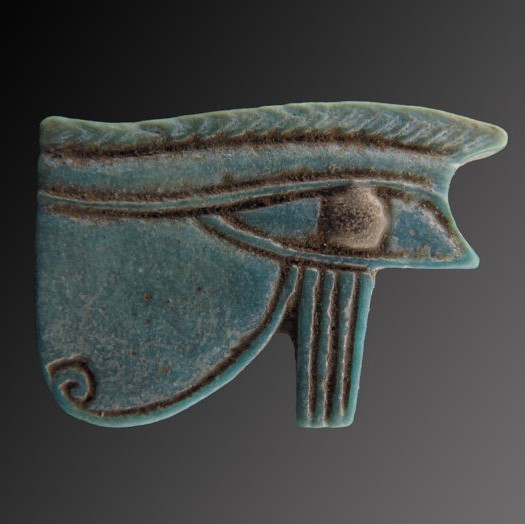
 Dr Colleen Darnell
Dr Colleen Darnell An example of a silver pendant with numbers in magic squares
An example of a silver pendant with numbers in magic squares A small pendant depicting the Udjat Eye
A small pendant depicting the Udjat Eye A heart scarab pendant set in gold.
A heart scarab pendant set in gold. The back of the heart scarab pendant inscribed with a verse from Chapter 30 of The Book of the Dead
The back of the heart scarab pendant inscribed with a verse from Chapter 30 of The Book of the Dead This pectoral is composed around the throne name of King Senwosret II. It was found among the jewelry of Princess Sithathoryunet in a special niche of her underground tomb beside the pyramid of Senwosret II at Lahun. Credit: Metropolitan Museum NY
This pectoral is composed around the throne name of King Senwosret II. It was found among the jewelry of Princess Sithathoryunet in a special niche of her underground tomb beside the pyramid of Senwosret II at Lahun. Credit: Metropolitan Museum NY Silver jewellery depicting jinns and women in Assuit fabric. Note the uneven number of bells
Silver jewellery depicting jinns and women in Assuit fabric. Note the uneven number of bells A contemporary scarab pendant by Egyptian jewellery designer Azza Fahmy
A contemporary scarab pendant by Egyptian jewellery designer Azza Fahmy